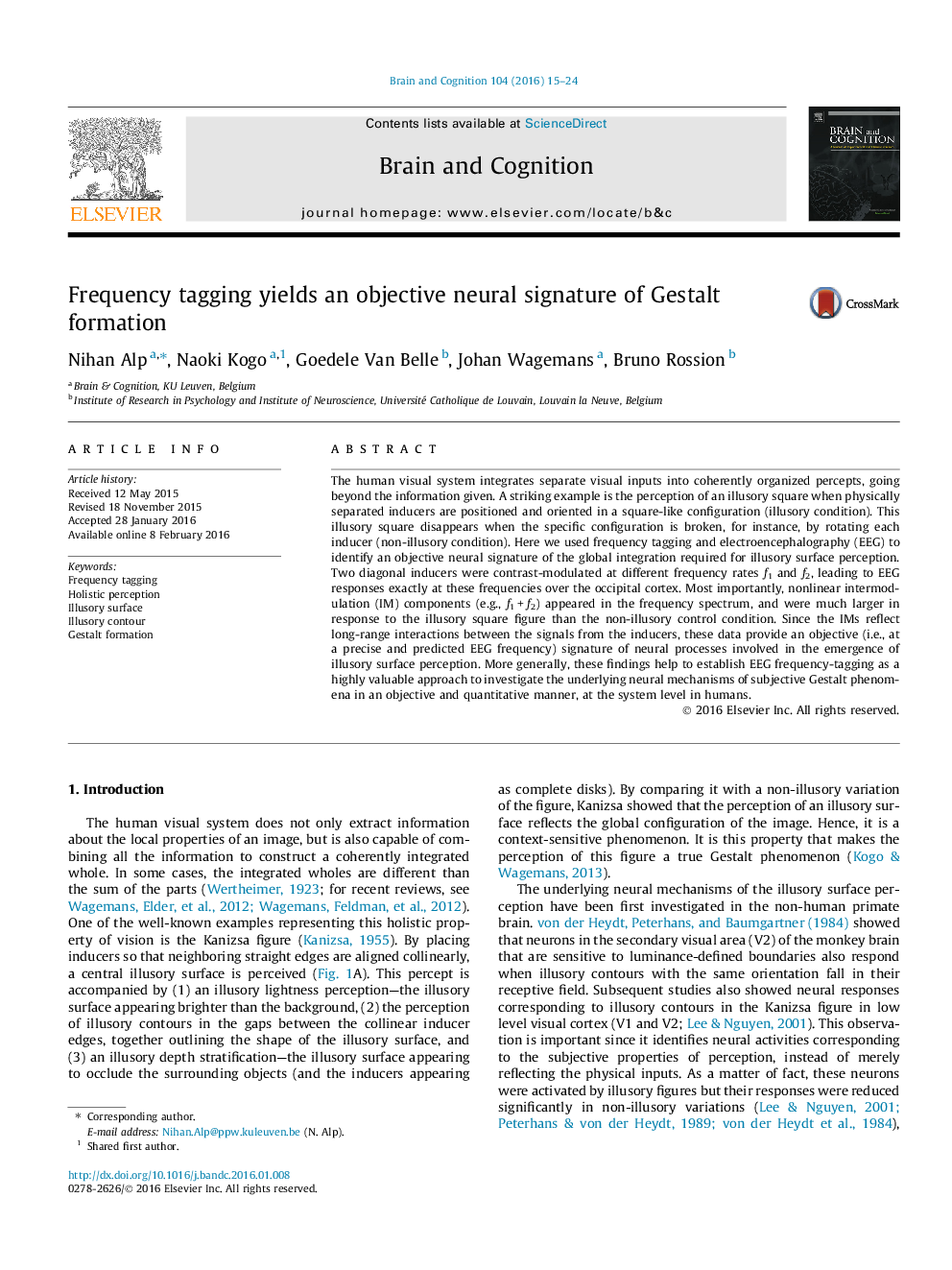| کد مقاله | کد نشریه | سال انتشار | مقاله انگلیسی | نسخه تمام متن |
|---|---|---|---|---|
| 924129 | 1473967 | 2016 | 10 صفحه PDF | دانلود رایگان |
• Frequency tagging was applied while presenting illusory and non-illusory figures.
• Intermodulation frequencies were significantly larger in the illusory figure condition.
• The element-based responses did not differ between conditions.
• General right hemisphere dominance was found.
• Long-range interactions do not depend on the specific frequency band used for tagging.
The human visual system integrates separate visual inputs into coherently organized percepts, going beyond the information given. A striking example is the perception of an illusory square when physically separated inducers are positioned and oriented in a square-like configuration (illusory condition). This illusory square disappears when the specific configuration is broken, for instance, by rotating each inducer (non-illusory condition). Here we used frequency tagging and electroencephalography (EEG) to identify an objective neural signature of the global integration required for illusory surface perception. Two diagonal inducers were contrast-modulated at different frequency rates f1 and f2, leading to EEG responses exactly at these frequencies over the occipital cortex. Most importantly, nonlinear intermodulation (IM) components (e.g., f1 + f2) appeared in the frequency spectrum, and were much larger in response to the illusory square figure than the non-illusory control condition. Since the IMs reflect long-range interactions between the signals from the inducers, these data provide an objective (i.e., at a precise and predicted EEG frequency) signature of neural processes involved in the emergence of illusory surface perception. More generally, these findings help to establish EEG frequency-tagging as a highly valuable approach to investigate the underlying neural mechanisms of subjective Gestalt phenomena in an objective and quantitative manner, at the system level in humans.
Journal: Brain and Cognition - Volume 104, April 2016, Pages 15–24
